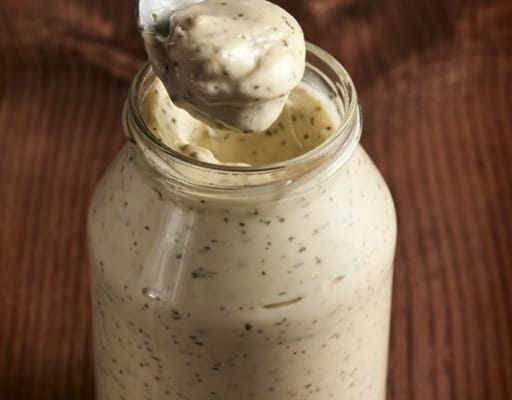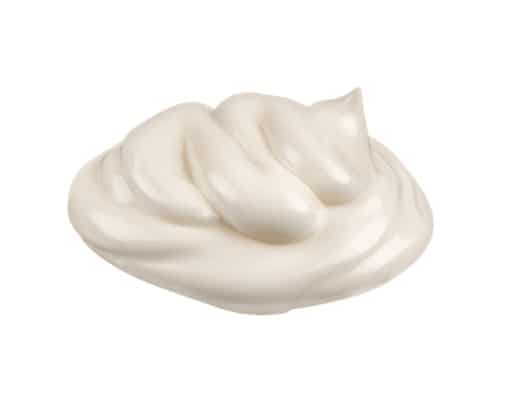If you ever left out an opened bottle of mayonnaise overnight and came back to it looking clean and normal, and even tasting like nothing ever happened to it, you have every right to wonder if it should actually be refrigerated.
In this article, we’ll clear the air concerning Mayo and refrigeration, find out if mayonnaise expires, and also answer some possible Mayo questions that you may have such as whether or not mayonnaise can be frozen.

Does Mayo Expire?
Mayonnaise, being a stable condiment, comes with a “best before” date instead of an expiration date, and it’s essential to know the difference between these terms and how they relate to food safety and quality.

Expiration dates indicate a strict deadline for consuming perishable items like meats, dairy products, or sensitive goods such as drugs and baby foods. Consuming these products beyond their expiration date can be hazardous due to harmful bacteria or toxic nature.
On the other hand, “best before” dates serve as guidelines for when a product is expected to maintain its peak quality in flavor, appearance, texture, and freshness.

While consuming past this date may not necessarily be unsafe (though external factors could still render it unsafe), the product might not taste or perform at its best.
With proper storage, mayonnaise typically maintains optimal quality for 8-12 months from its manufacturing date.
Beyond this timeframe, manufacturers cannot guarantee the promised features and qualities on product labels or advertisements.
Can I Use Expired Mayonnaise?
If you have an unopened bottle of mayonnaise that has been stored in a cool, dark place like a pantry without any signs of damage or broken seal or parts, it may be good for 2-3 months past the expiration date.
If you opened the bottle, used it, and then refrigerated it, only for it to expire while still in storage, you can still consume the mayonnaise, but make sure there are no visible or observable signs of spoilage (check below), and the mayonnaise is stored with the cap tightly locked in place always.
Ensure to use the Mayo as fast as possible as it is now more prone to spoilage since the seal has been broken and air has been introduced to it, and also because it has stored past the best before date which means the ingredients may have started breaking down on their own.
Does Mayonnaise Need To Be Kept In The Fridge?
Before opening, mayonnaise is shelf-stable due to its pasteurized egg content, low pH levels, added preservatives, and airtight packaging that keep bacteria at bay, so it doesn’t need refrigeration.
Once opened however, refrigeration becomes essential within a day (or less if above 50°F) to prevent bacterial growth and maintain freshness.
What makes mayonnaise shelf-stable, you might ask?
Well, it’s the fact that mayonnaise is made from a mix of oil, pasteurized egg yolks or whole eggs, acids like vinegar or lemon juice, and seasonings.
Pasteurization kills potential bacteria in eggs while acidic components and salt create an inhospitable environment for bacterial growth. Airtight sealing and added preservatives also act as a double layer of protection against contamination.
Upon opening the container, air carrying contaminants enters the product and introduces them into the medium (although brands like Kewpie seriously limit exposure through bottle design).
The acidic nature of mayonnaise still performs a decent job at slowing the growth of these bacteria and fungus; hence the reason why a fresh bottle of Mayo appears safe even after being left out overnight.
Nonetheless, risks exist; therefore refrigerating opened mayonnaise is the best way to slow down bacterial growth further and ensure its safety.
How To Store Mayonnaise After Opening?
After opening, mayonnaise can generally last for up to 2-3 months when stored in the refrigerator.
To maintain its freshness and quality, make sure to keep the container tightly sealed and store it in a consistently cold area of the fridge, ideally below 40°F (4°C) — inside the refrigerator is a safer bet than the shelves of the handle.
Make sure to only use clean utensils when serving from the bottle of Mayo, and keep the bottle refrigerated as soon as you’re done with it to limit the chance of microbial growth.

Do not make the mistake of considering the expiration date printed on the container as a never-failing guide for Mayo storage, while it’s a good reference point for unopened mayonnaise, once opened, everything changes, and it’s important to monitor the quality of the mayo by checking for any signs of spoilage: below, and discarding the Mayo completely (with the bottle) if you find the them.
How To Tell If Mayonnaise Is Bad?
Telling if your mayonnaise has gone bad in the fridge is quite simple, and if you’re wondering if Mayo does go bad in the fridge, yes it does, but slowly.
To determine if your mayonnaise has gone bad, look out for these signs.
Best Before date
First check the best before date on the container as that is a good starting point for gauging your mayos freshness. If it’s still not past the best before date, the your Mayo should be safe to consume, and if it is past the best before date, then you need to exercise caution and go ahead and check the signs below too.
Discoloration
Fresh mayonnaise is typically white or pale yellow, if you have anything that is outside that, then there are questions surrounding your bottle of mayonnaise. Any Mayo that has turned darke or an unusual shade might be spoiled.
Odor
When Mayo is good, it has a somewhat neutral taste, and when it is beginning to go bad or has gone bad, it often develops an off-putting scent that doesn’t seem right, and it’s best to avoid consuming that kind of Mayo.
Separation
While not always the case, separation can occur because your mayonnaise has begun to go bad. The most likely cause is the fluctuation in temperature which allows bacteria to thrive and begin breaking down the emulsion.
Texture
The texture of mayonnaise is creamy and smooth, and when you have a lumpy, clumpy or grainy mayonnaise, it a sign that the Mayo has lost its emulsion, but the reason might be questionable since it can happen even when you freeze and thaw Mayo, or due to prolonged exposure to colder temperature. So textire isn’t really the best way to tell if your mayonnaise has gone bad.
Mold
The most tell-tale sign that your mayonnaise is bad is If you see mold growth on the surface or inside the container. Don’t even attempt to salvage the Mayo, just discard it immediately.
How To Store Mayonnaise Without Refrigeration?
Storing mayonnaise without refrigeration can be a bit challenging, especially since it contains egg which is perishable.
However, there are a few methods that can help you keep your mayonnaise fresh and safe to consume for a short period of time.
Keep in mind that these methods are not as effective as refrigeration and may only extend the shelf life for a few hours to days.
Store in a cool, dark place
Already, as it is, you can store unopened bottles of mayonnaise outside of the refrigerator in a cool dark space for upto 1 year after the date of manufacture. Just make sure it’s an unopened bottle of Mayo and that it’s kept away from heat and light as these can accelerate spoilage.
Use a cooler or insulated bag
If you don’t have access to a refrigerator, consider using a cooler or insulated bag with ice packs to keep your mayonnaise cool. This will help maintain a consistent temperature and prevent the growth of bacteria.
Choose shelf-stable mayonnaise
Some mayonnaise brands like “Hellmann’s Real Mayonnaise Squeeze Bottle, offer shelf-stable versions of their products that are meant to sit alongside ketchup and other condiments at dinner table, and don’t require refrigeration.
They often contain extra preservatives that help keep the mayonnaise fresh for an extended period of time.
Always make sure to read the label carefully and ensure that it says “No need for refrigeration” or something similar before you begin testing it on the counter.
Remember that these methods are not foolproof, and mayonnaise stored without refrigeration will have a shorter shelf life compared to mayonnaise stored properly in the refrigerator.
In my own opinion, it’s better to opt for single-use packets when you know you won’t have access to refrigeration than to try and store Mayo in an insulated bag packed with ice cubes.
Can You Freeze Mayonnaise?
Freezing mayonnaise is technically possible, but it is not generally recommended because it experiences a change in texture when thawed which can be difficult to salvage .
The reason why the changes occur is because mayonnaise is an emulsion (the combination of two immiscible liquids) and the freezing process can cause the ingredients to separate, but you won’t see that first hand, until you defrost it.
That’s when you’ll realise that most of the water and oil are no longer married together again.
If you still want to freeze your mayonnaise, transfer it to an airtight container, making sure to leave an inch head space for expansion as it freezes, seal the container and label it with the date and name of the product and place it in the freezer for up to three months.
When you’re ready to use the frozen mayonnaise, allow it to thaw in the refrigerator for several hours.
Frequently Asked Questions
Why Do Restaurants Not Refrigerate Mayo?
Restaurants often don’t refrigerate their mayonnaise because commercially produced or store-bought (or even commercial grade Mayo) is naturally in a way that it resists the growth of bacteria even when opened and left out for many hours on end, just not longer than a whole day.
And sometimes these Mayo are packaged in bottles that are designed to limit access to air which can introduce contaminants.
So merely leaving the bottle on the counter for a few hours is perfectly fine. But if it were to be kept for longer than 24 hours, then it would certainly begin to go bad which would reflect in the taste.

